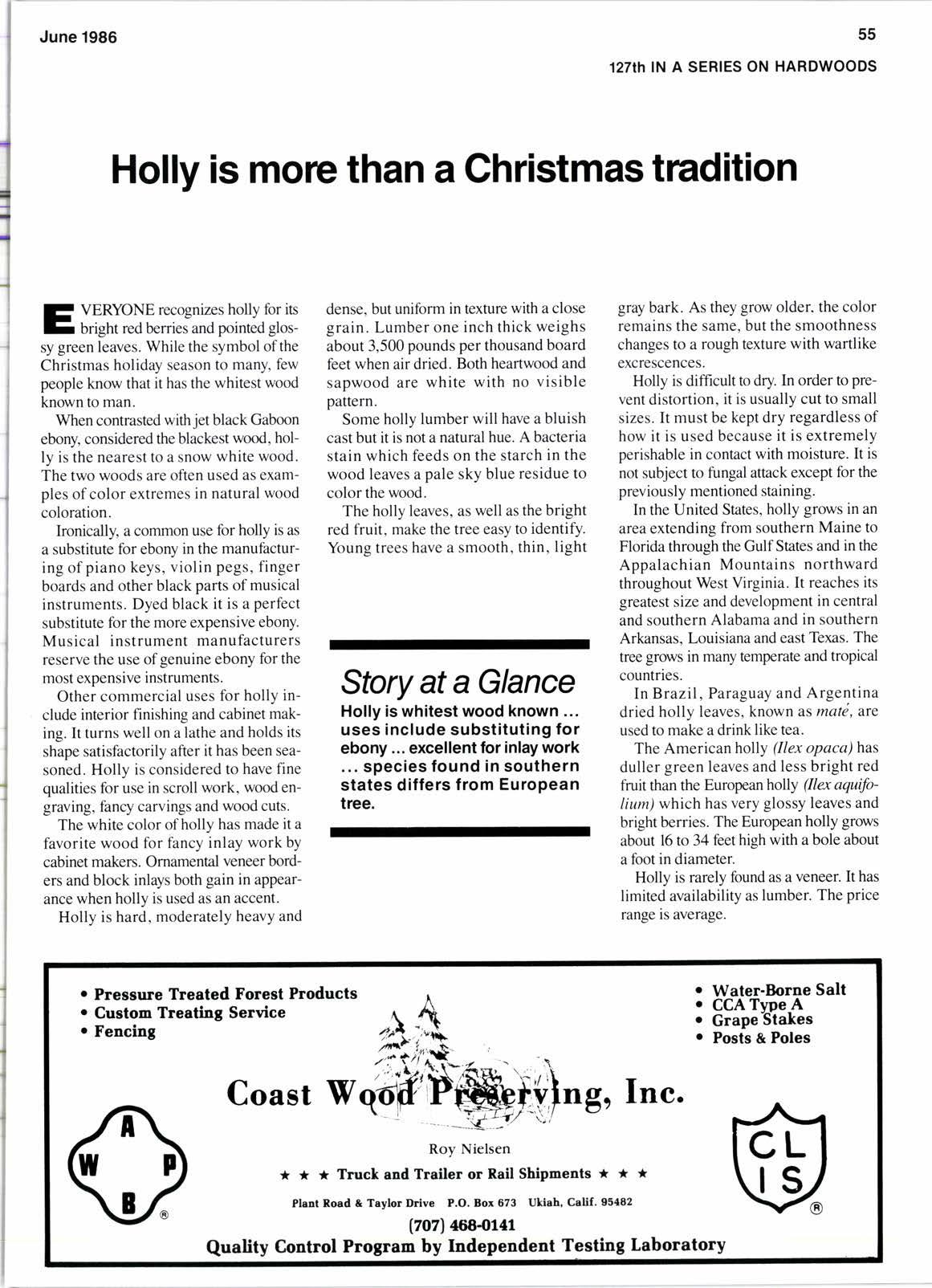
2 minute read
Holly is morc than a Christmas tradition
VERYONE recognizes holly for is E bright red berries and pointed glossy green leaves. While the symbol of the Christmas holiday season to many, few people know that it has the whitest wood known to man.
E!
When contrasted with jet black Gaboon ebony, considered the blackest wood, holly is the nearest to a snow white wood. The two woods are often used as examples of color extremes in natural wood coloration.
Ironically, a corrrmon use for holly is as a substitute for ebony in the manufacturing ofpiano keys, violin pegs, finger boards and other black parts of musical instruments. Dyed black it is a perfect substitute for the more expensive ebony. Musical instrument manufacturers reserve the use of genuine ebony for the most expensive instruments.
Other commercial uses for holly include interior finishing and cabinet making. It turns well on a lathe and holds its shape satisfactorily after it has been seasoned. Holly is considered to have fine qualities for use in scroll work, wood engraving, fancy carvings and wood cuts.
The white color of holly has made it a favorite wood for fancy inlay work by cabinet makers. Ornamental veneer borders and block inlays both gain in appearance when holly is used as an accent.
Holly is hard, moderately heavy and dense, but uniform in texture with a close grain. Lumber one inch thick weighs about 3,500 pounds per thousand board feet when air dried. Both heartwood and sapwood are white with no visible pattern.
Some holly lumber will have a bluish cast but it is not a natural hue. A bacteria stain which feeds on the starch in the wood leaves a pale sky blue residue to color the wood.
The holly leaves, as well as the bright red fruit, make the tree easy to identify. Young trees have a smooth, thin, light
Story at a Glance
Holly is whitest wood known ... uses include substituting for ebony excellent for inlay work species found in southern states differs from European tree.
gray bark. As they grow older. the color remains the same, but the smoothness changes to a rough texture with wartlike excrescences.
Holly is diffrcult to dry. In order to prevent distortion, it is usually cut to small sizes. It must be kept dry regardless of how it is used because it is extremely perishable in contact with moisture. It is not subject to fungal attack except for the previously mentioned staining.
In the United States, holly grows in an area extending from southern Maine to Florida through the Gulf States and in the Appalachian Mountains northward throughout West Virginia. It reaches its greatest size and development in central and southern Alabama and in southern Arkansas, Louisiana and east Texas. The tree grows in many temperate and tropical countries.
In Brazil, Paraguay and Argentina dried holly leaves. known as mate. are used to make a drink like tea.
The American holly (Ilex opaca)has duller green leaves and less bright red fruit than the European holly (Ilex aqufolium) which has very glossy leaves and bright berries. The European holly grows about 16 to 34 feet high with a bole about a foot in diameter.
Holly is rarely found as a veneer. It has limited availability as lumber. The price range is average.










